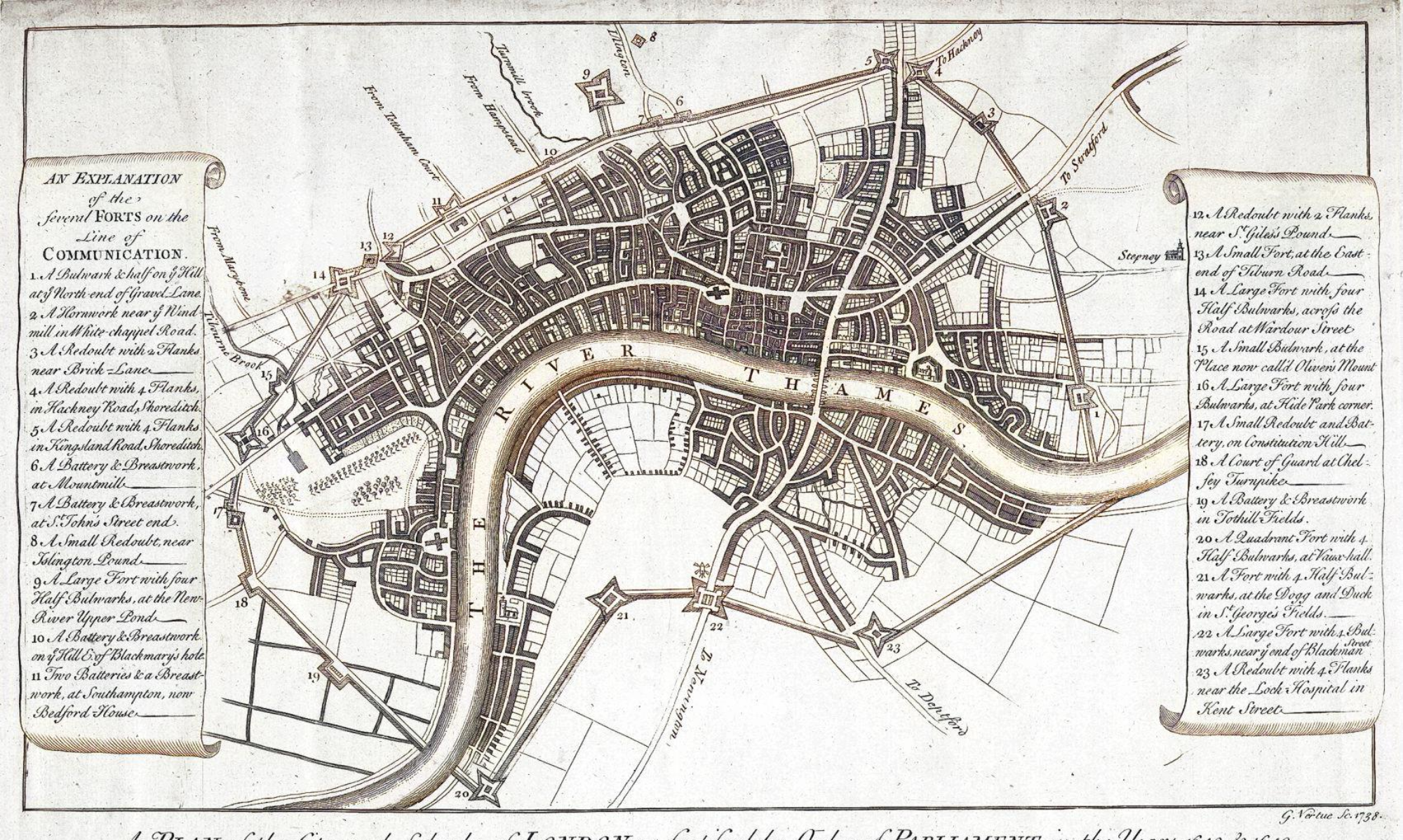In the 17th Century, some of the units dividing land and civic and religious service included:
-
-
- Counties
- Hundreds
- Cities
- Liberties
- Parishes (Civil and Religious)
-
Counties
At the time of Henry Jennings, the city of Westminster and the city of London were in the county of Middlesex. Middlesex was one of the Historic Counties of England established for administration by the Normans.
Hundreds
Counties were divided into Hundreds and served by Hundreds Court, which would hear cases 12 to 24 times a year.
Cities
Cities such as London evolved from a small village to a fort and then onto a city. The city predates formal administrative organization. The City of London is a square mile, formerly walled by the Romans. Following Roman tradition, citizenship in the City of London held certain privileges.
The Diocese of London granted the City of Westminster Letters of Patent in 1540.
Liberties
Liberties originated from lands reserved for royalty reverting to private hands, such as a feudal lord. The Liberty of Westminster included the City of Westminster, half the parish of St Clement Danes, and St Mary le Strand.

Parishes
Both Civil and Ecclesiastical Parishes existed in the 17th century. Civil parishes formed following the separation from the Catholic Church of Rome. Local Parish leaders collected and administered various rates and taxes for the poor, and supporting armies such as during the British Civil War.
Ecclesiastical Parishes administered and recorded Births, Marriages, and Deaths or Burials.
Reviewing rates and taxes collected during the 17th century, it is apparent that the larger civil parishes collected taxes from the smaller parishes, including St Margaret’s and St Martins in the Fields collecting taxes for St Clement Danes and St Mary le Strand.
